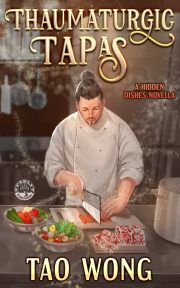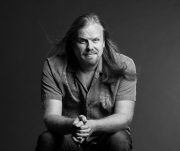The Art of the Playlist
by Paul Jessup
 Ever since I first started taking writing seriously as a teenager, I’ve always written to music. Back then it was a bit more difficult than it is now, in the days of Spotify and gigantic playlists that can stretch on for hours or even days. Back in those days I would make mix tapes for my writing, each story and scene would get its own mixtape of songs that I felt carried the tone and the emotion of what I’m trying to convey.
Ever since I first started taking writing seriously as a teenager, I’ve always written to music. Back then it was a bit more difficult than it is now, in the days of Spotify and gigantic playlists that can stretch on for hours or even days. Back in those days I would make mix tapes for my writing, each story and scene would get its own mixtape of songs that I felt carried the tone and the emotion of what I’m trying to convey.
There was a bit of art to it, back then. I wanted it to flow correctly, so I could keep on writing without pause or interruption. I would take songs that had a certain harmony and made sure they crescendo at the right time, following the narrative rise and rise and rise of how scenes and stories are constructed. I would also take a key song, one that surmised the tone and narrative themes I wanted to express within a story. Or maybe a song that inspired me, that gave me character names and sharp images of what could happen within a text.
Some things have changed these days, others haven’t. You don’t have to listen through each song when creating a playlist, as you do with a mixtape. You don’t have to worry about crescendo and rhythm and pitch that matches an exact narrative, you can just fit them together and put it on random. You’re not limited to an hour or so on a physical medium, you can have music stretch on and on for hours or even days.
I’ve taken to construct playlists for themes, for scenes, for characters, for entire novels. For me, the emotional power of the music is the most important part. I want an emotional harmony, one that rings true with whatever I’m working on.
For short stories? It’s simple. Sometimes I only use one song on repeat and that’s it. For the short story The Music of Ghosts (published in Interzone), I just listened to Hans Zimmer’s Time, from the Inception soundtrack. Other times I’ll just have a long generic writing playlist, that seems to work fine when I don’t have a specific thing in mind.
Though, that one has a bit of a drawback. If you put it on random, and it switches from a beautiful, melancholy song to a Wagnerian battle ode with loud drums and singing? Well, that shocks me right out of the story and I have to try and find my way back in. It’s why I rarely use a large playlist and prefer to craft tiny playlists that work for a certain mood, scene, or inspire a story or a character.
Back when I was doing mixtapes I had to have music with lyrics in it. Tori Amos’s Under the Pink and Boys for Pele were favorites. As well as Sonic Youth and Tool. These days, however, I need the music to either be instrumental or in a language I don’t understand. I put on a lot of post-rock, like Godspeed, You! Black Emperor, A Silver Mount Zion, and Mogwai. These swelling walls of guitars contain the exact emotional frequency I feed on while writing.
Other times I’ll mix it and match it all with soundtracks to video games, movies, and tv shows. Again, I want something that carries emotional weight and seems to fit together with how I picture the world of the story and the characters inside.
It’s a tricky thing, to get all of these right. I’ve found that if my playlist doesn’t quite work, the stories suffer and tend to be a frustrating affair. It’s taken a lot of experimentation through the decades I’ve been doing this to get it just right. And even still, I find myself tweaking the playlists over and over again, just to get that right sound. That right emotional feeling.
When I hit it, the writing becomes poetry and moves to the music. Like a dance, the words stepping in time to the orchestral summoning. If it’s bad? The words clunk and clatter, I find it hard to concentrate, and I end up starting over and over and over again.
Not a perfect process, mind you. But it’s one that works for me, and something I think can help just about everyone else out there with their writing.
•••
Paul Jessup is a critically acclaimed/award-winning author of strange and slippery fiction. His novel Close Your Eyes is currently out from the Apex Book Company. You can visit him at pauljessup.com or on Twitter at @pauljessup.


